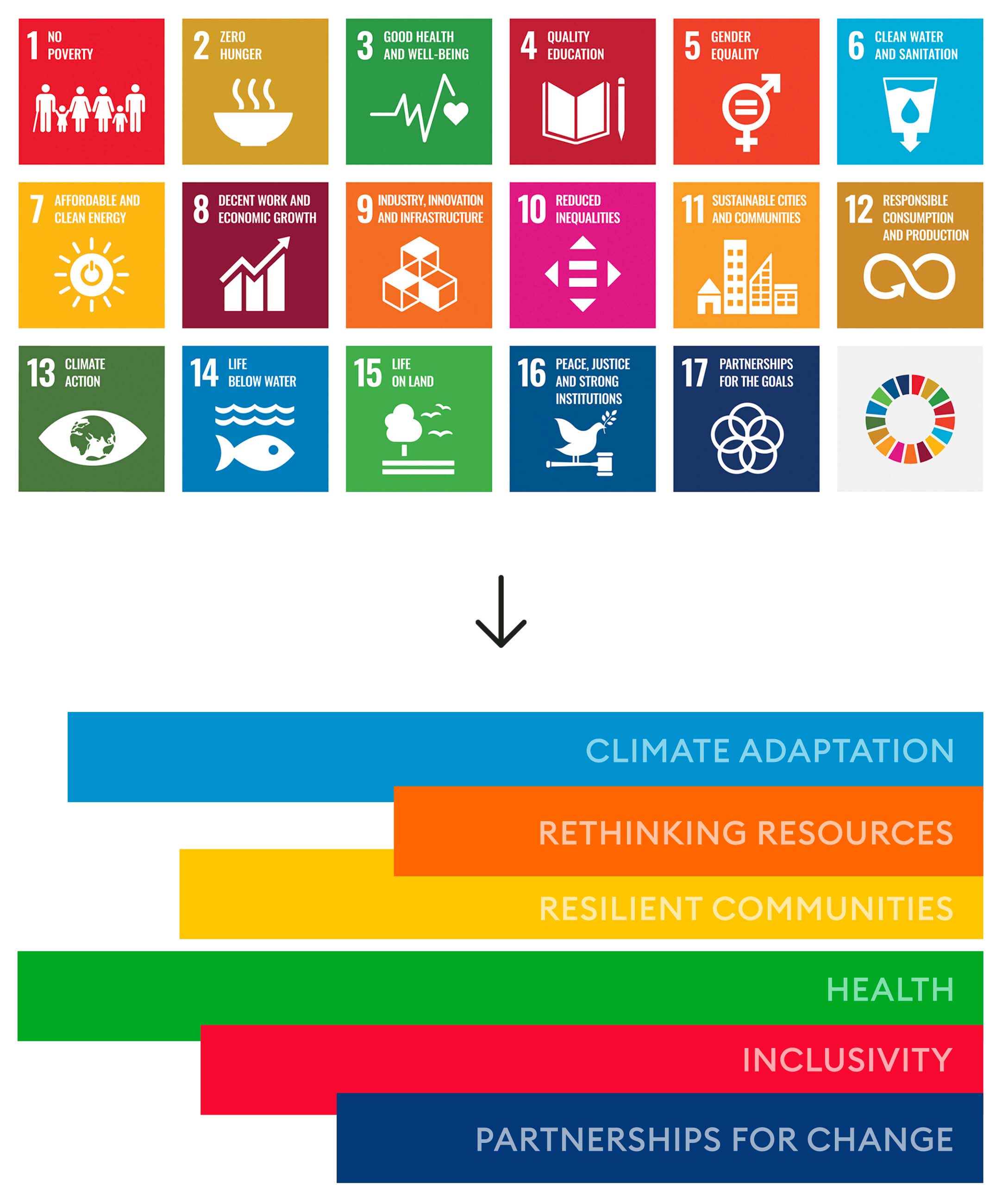The 17 UN Sustainable Development goals are the guiding light and the raison d’être for the World Congress. The Goals cover every aspect of a fair and safe life for everyone on the planet and the congress allows architects and professionals from the whole built environment to look into how we can contribute to their realization.
However, addressing all 17 goals with diligence and respect during a three and a half-day congress would be difficult without missing valuable nuances. On the other hand, pooling all 17 goals into one big conversation would also be superficial and lead to oversimplification of complicated issues. We have therefore created 6 congress themes.
IN MORE DEPTH:
We found inspiration in the work of Katherine Richardson, Professor in Biological Oceanography at the University of Copenhagen, and prominent climate scientist. Professor Richardson assumes that to be truly sustainable, the green transition must be inclusive and provide sustainable solutions for all. If we neglect the disadvantaged, we will not succeed in realizing the Sustainable Development Goals.
The 6 congress themes are based on this dual commitment to environmental and social sustainability. The 6 themes cut across and synthesize content from the 17 goals without sacrificing the complexity and interdependency of the sustainability agenda in the built environment.
Katherine Richardson is a member of our scientific committee, which comprises 17 leading international researchers from architecture and the built environment.
To ensure that the themes are both topical and exhaustive, the committee has been deeply involved in their development.
Architecture faces a very serious challenge to become more sustainable. The 6 themes will shape conversations during the congress and guide the development of answers to difficult questions. They are a map for succeeding with sustainable futures – leaving no one behind.
The 6 themes are: Design for Climate Adaptation, Design for Rethinking Resources, Design for Resilient Communities, Design for Health, Design for Inclusivity & Design for Partnerships for Change. They will form the congress topics and innovations presented on the science track.
EXPLORE
THE 6 CONGRESS THEMES
HEALTH
Architecture and health are inseparable, but it’s not only about hospitals and places for healing. Design for health looks at how architecture and design affect the physical and mental health of individuals and communities. How can architects help improve public health through careful planning and building
PARTNERSHIPS FOR CHANGE
To rethink and transform the practice of architecture, we need to re-frame not only spatial concepts but also how we think about design, participation and community. An important tool will be to establish new partnerships across many different professions and across geographies and ethnicities.








